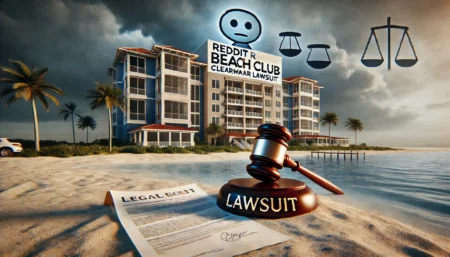Aramid fibers are high-performance synthetic materials known for their exceptional strength, heat resistance, and durability. They are widely used in industries such as aerospace, military, and personal protective equipment.
Despite their many advantages, complaints about aramid fibers have emerged in various industries. These complaints range from durability concerns to safety compliance issues. Manufacturers and users have raised concerns about the reliability of aramid-based products.
Understanding these complaints is important for improving production processes and ensuring that aramid fibers meet industry standards. Addressing these concerns can lead to better product performance and customer satisfaction.
This article provides a detailed explanation of common aramid-related complaints. It also explores possible solutions to overcome these issues.
Common Complaints About Aramid Fibers
Quality and Durability Issues
Aramid fibers are designed to be strong and long-lasting, but some users report that they degrade faster than expected. Factors such as exposure to UV rays, chemicals, and moisture can weaken the fibers over time.
Inconsistent fiber quality is another major complaint. Some batches of aramid material may not meet expected standards, leading to performance failures in critical applications.
Over time, aramid fibers can lose their original strength and flexibility. This issue is especially problematic in safety gear, where long-term durability is essential.
To minimize these concerns, proper storage and maintenance guidelines should be followed. Manufacturers must also ensure that the fibers undergo rigorous quality control tests before being distributed.
Manufacturing Defects
Defects in the manufacturing process can lead to weak or irregular fibers. Some users report that aramid fabrics arrive with uneven thickness or inconsistent weaving.
Certain aramid products may fail under stress due to poor processing techniques. If fibers are not properly aligned or woven, they may not provide the expected level of protection.
Companies sometimes struggle with maintaining uniformity in aramid fibers across different production batches. Even minor variations in the chemical composition can lead to performance inconsistencies.
By improving production standards and investing in advanced manufacturing technology, these defects can be reduced. Regular inspections and batch testing are necessary to ensure high-quality fibers.
Table: Common Quality and Manufacturing Complaints in Aramid Fibers
| Complaint Type | Description | Possible Causes | Solutions |
| Durability Issues | Fibers weaken over time | UV exposure, moisture | Proper storage, coatings |
| Weaving Defects | Irregular or weak fabric patterns | Poor processing techniques | Better quality control |
| Inconsistent Quality | Different batches have different properties | Chemical variations | Stricter material testing |
| Early Degradation | Loss of strength too soon | Environmental exposure | Enhanced fiber treatment |
Compliance and Safety Concerns
Safety is a major concern for industries that rely on aramid fibers. Some users have reported that the material does not always meet required fire-resistant standards.
Military and industrial workers sometimes experience failures in protective gear made from aramid. If the material does not perform as expected, it could lead to serious safety risks.
Different countries have varying safety regulations for aramid-based products. This can cause compliance issues for manufacturers that export products globally.
To address these concerns, aramid manufacturers must conduct more thorough testing. Meeting international safety standards ensures that products remain reliable and trustworthy.
Cost and Supply Chain Problems
Aramid fibers are expensive to produce, making them costly for businesses and consumers. The high cost is a frequent complaint among companies that rely on these materials.
Supply chain delays have also affected the availability of aramid fibers. Industries that depend on aramid products often face long waiting times due to production bottlenecks.
The cost of raw materials is another factor. High demand and limited supply can drive up prices, making it difficult for smaller companies to afford aramid-based products.
Efforts to reduce production costs without sacrificing quality are necessary. Innovations in manufacturing could help make aramid fibers more accessible.
Bullet Points: Key Cost and Supply Issues
- High Production Costs: Expensive manufacturing processes increase the final product price.
- Supply Chain Delays: Difficulty in obtaining materials causes disruptions.
- Limited Raw Material Availability: Shortages lead to price hikes.
- Expensive End Products: Consumers face high prices for aramid-based safety gear.
- Potential Solutions: Improved supply chain management and alternative material research.
Environmental and Health Risks
The production of aramid fibers involves chemical processes that may have environmental impacts. Some complaints focus on pollution and waste disposal issues.
Workers handling aramid materials may experience skin or respiratory irritation. Safety precautions are necessary to minimize these health risks.
Aramid fibers are not biodegradable, which raises concerns about their long-term environmental impact. Finding ways to recycle or repurpose these materials is essential.
More sustainable alternatives are being researched to reduce the environmental footprint of aramid production. Companies are exploring eco-friendly solutions without compromising durability.
Addressing Aramid-Related Complaints
Improving quality control can help resolve many complaints about aramid fibers. Manufacturers need to enforce strict testing procedures to ensure consistency.
Proper storage guidelines must be followed to prevent fiber degradation. Keeping aramid materials away from moisture and UV exposure can extend their lifespan.
Investing in research and development can lead to stronger, more affordable aramid fibers. Advancements in fiber technology may also help address environmental concerns.
Regulatory enforcement is crucial in ensuring that all aramid products meet safety standards. Companies must comply with national and international guidelines to maintain trust.
By addressing these complaints, the reliability and usability of aramid fibers can be improved. Industries relying on these materials will benefit from better durability, performance, and affordability.
Conclusion
Aramid fibers offer high-performance benefits, but they are not without challenges. Complaints regarding durability, manufacturing defects, and safety concerns must be addressed.
Production costs and supply chain issues continue to be major challenges. Finding cost-effective solutions while maintaining quality is essential for industry growth.
Environmental concerns related to aramid fiber production and disposal should not be ignored. Sustainable alternatives and recycling initiatives can help reduce negative impacts.
The future of aramid fibers depends on continuous improvements in quality, affordability, and sustainability. Addressing these issues will help industries fully benefit from this advanced material.
FAQs
Why do aramid fibers degrade over time?
Aramid fibers weaken due to UV exposure, moisture, and chemical interactions, which break down their molecular structure.
What are the most common manufacturing defects in aramid products?
Inconsistent fiber thickness, weak weaving, and improper chemical processing can lead to performance failures.
Are aramid fibers completely fireproof?
No, aramid fibers are heat-resistant but can still degrade at extreme temperatures over prolonged exposure.
Why are aramid fibers so expensive?
The complex production process, high-quality raw materials, and strict quality control measures contribute to their high cost.
How can industries reduce aramid-related complaints?
By improving manufacturing standards, enhancing quality control, and ensuring compliance with international safety regulations.




